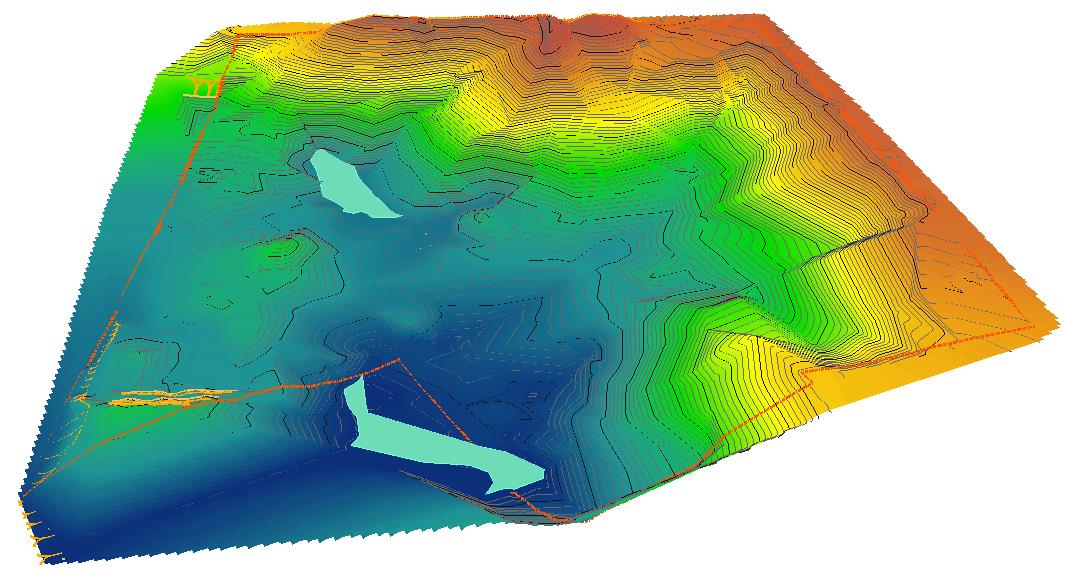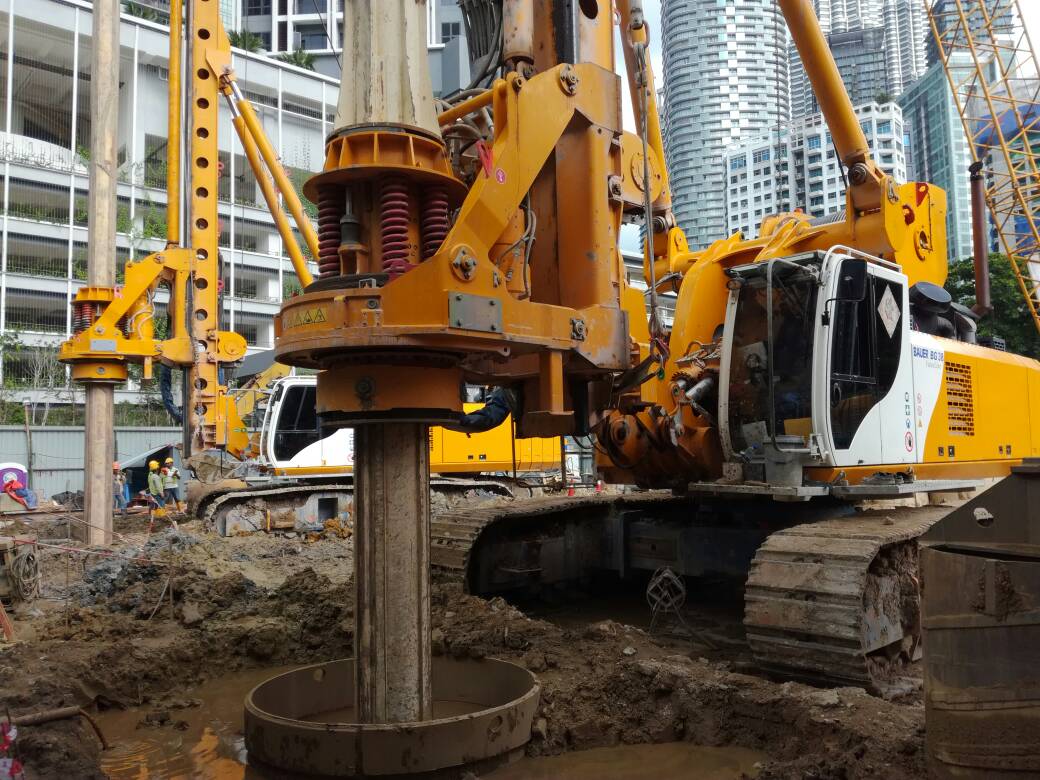If you own or reside at a property with adjacent slopes or retaining walls, you might want to be concerned over the stability of the slope in question.
Here is an example of a famous slope failure that occurred in Malaysia i.e. Puncak Setiawangsa (2012). There were no casualties because the residents were vigilant enough to detect early warning signs such as wall cracks and managed to evacuate before it struck.
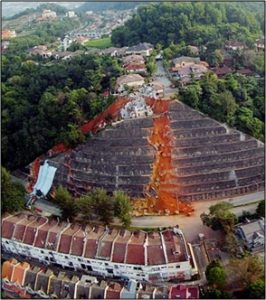
Photo: Puncak Setiawangsa (2012) landslide – Photo from mynewshub.my
It is interesting to note that in Malaysia, about 90% of the slope failures occur due to infiltration as the result of large upslope catchment. In simpler terms, it means that slope failure usually happens when there is a large surface area at the top of the slope where the water seeps into the ground surface during heavy rainfall. Other factors include poor slope profile, poor slope drainage, presence of unfavourable relict joints, etc.
Here are some telltale signs of a distressed slope which you can easily observe:
- Tilted fence, trees, lamp post, etc. A usually upright body tilting is a very good indication that there are some ground movement happening. This can happen anywhere on the slope, be it the crown, batter, berm or toe. If this movement is slow, probably happening over the years, it can be associated with a form of slope failure called “creep”. Although it may not necessarily mean that the slope is in risk of failing, a professional assessment on the slope stability is recommended, especially if the tilting happened overnight after a major event like an unusually heavy rainfall.
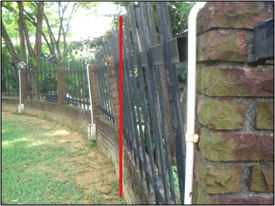
Photo: Notice that the fencing has tilted, evidence that the ground at that area has moved.
- Cracks at the top of the slope. Better known as tension cracks, these cracks happen when the slope “slips” slightly, pulling the soil away and causing tension at the crown of the slope, hence the term “tension crack”.
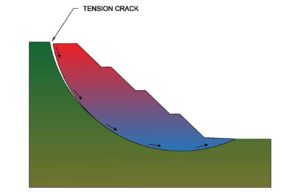
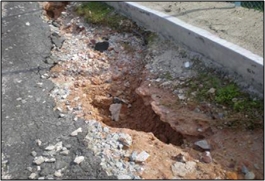
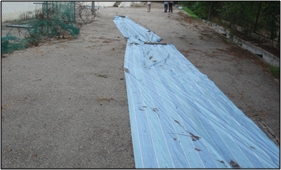
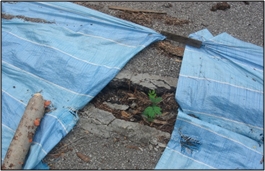
Photos (from clockwise from top left): 1) A schematic representation of how a tension crack occurs. 2) A large tension crack at the crown of a distressed slope. 3) A long stretch of tension crack has been covered in tarpaulin sheets to prevent any further water seeping in during rainfall. 4) The tension crack is revealed to be up to 10cm wide.
- Damaged drainage system. Drains at the vicinity of slopes are very susceptible to damages whenever there is significant ground movement. Note that once the drain cracks, there are gaps where the rainfall can penetrate the ground and accelerate the deterioration of the slope.
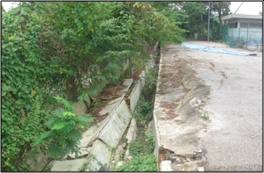
Photo: The heavily cracked precast drain creates gaps where water from rainfall can easily seep into the underlying soil, potentially causing the slope to deteriorate even faster.
- Substantial debris from the slope. Mudflows, fallen rock boulders, surface erosion or localized slope failures are early indication of slope instability. If you find that the drainage system or the area around the toe of the slope is frequently clogged by substantial amount of soil, it is advisable to seek for an assessment on the slope stability.
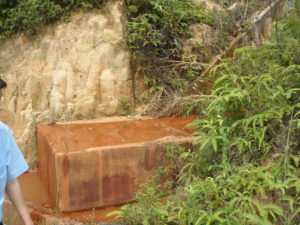
Photo: Example of a clogged sump due to excessive sediments resulting from severe surface erosion of a slope.
- Structural damage on the building. Cracks on the building, jammed doors or windows, cracks on paved areas appearing and widening over time, walkways being pulled away from the building are all indications of ground movement.
All the telltale signs listed above revolve around the detection of ground movement due to possible slope distress.
While it is likely that slope failures tend to happen slowly over time, major events such as unusually heavy rainfall, burst water pipes, earthquakes, explosions or vibrations are known to cause sudden slope failures.
A good practice for people residing at areas with high slopes and retaining walls is to carry out routine slope maintenance. Here are some things that you can do to enhance the long term stability of the slope:-
- Ensure that the surface protection of the slope is properly maintained e.g. repair cracked surface, reinstate barren slope surface with vegetation, etc.
- Clear the drainage system to enable smooth discharge of rainfall.
- Clear and unblock weepholes (if any).
- Monitor any anomalies such as erosion, water seepage, signs of distress, etc.
If you find yourself at risk of a slope failure, it is a good idea to seek a professional help where the slope in question will be assessed and remedial works will be proposed and carried out, if necessary.
